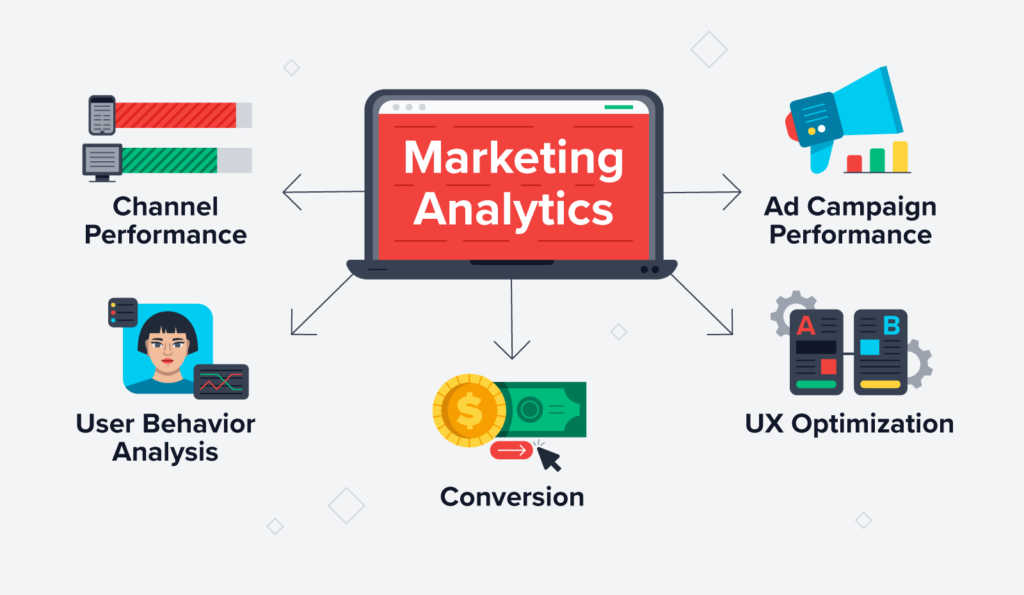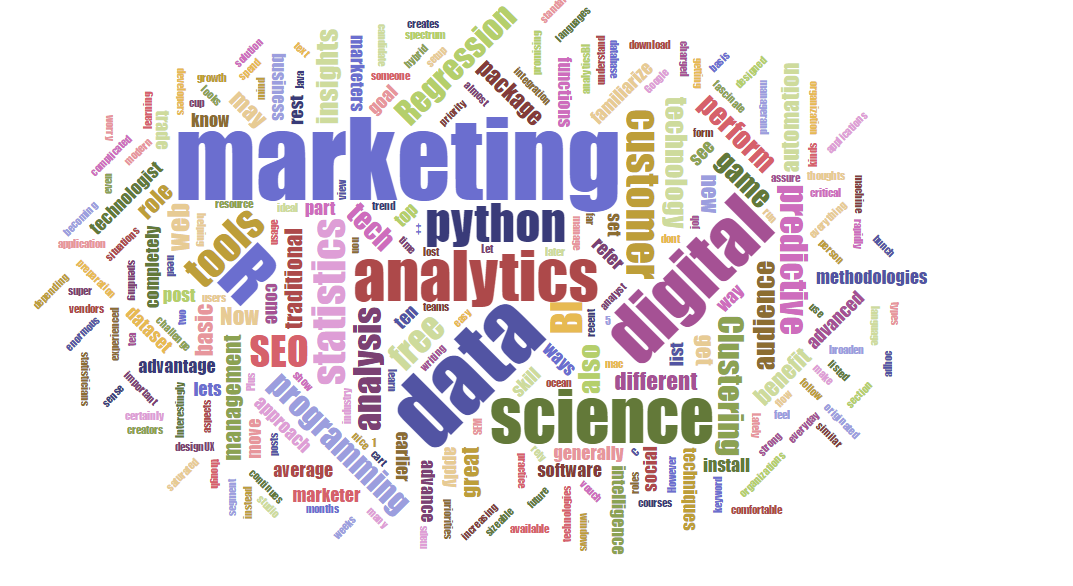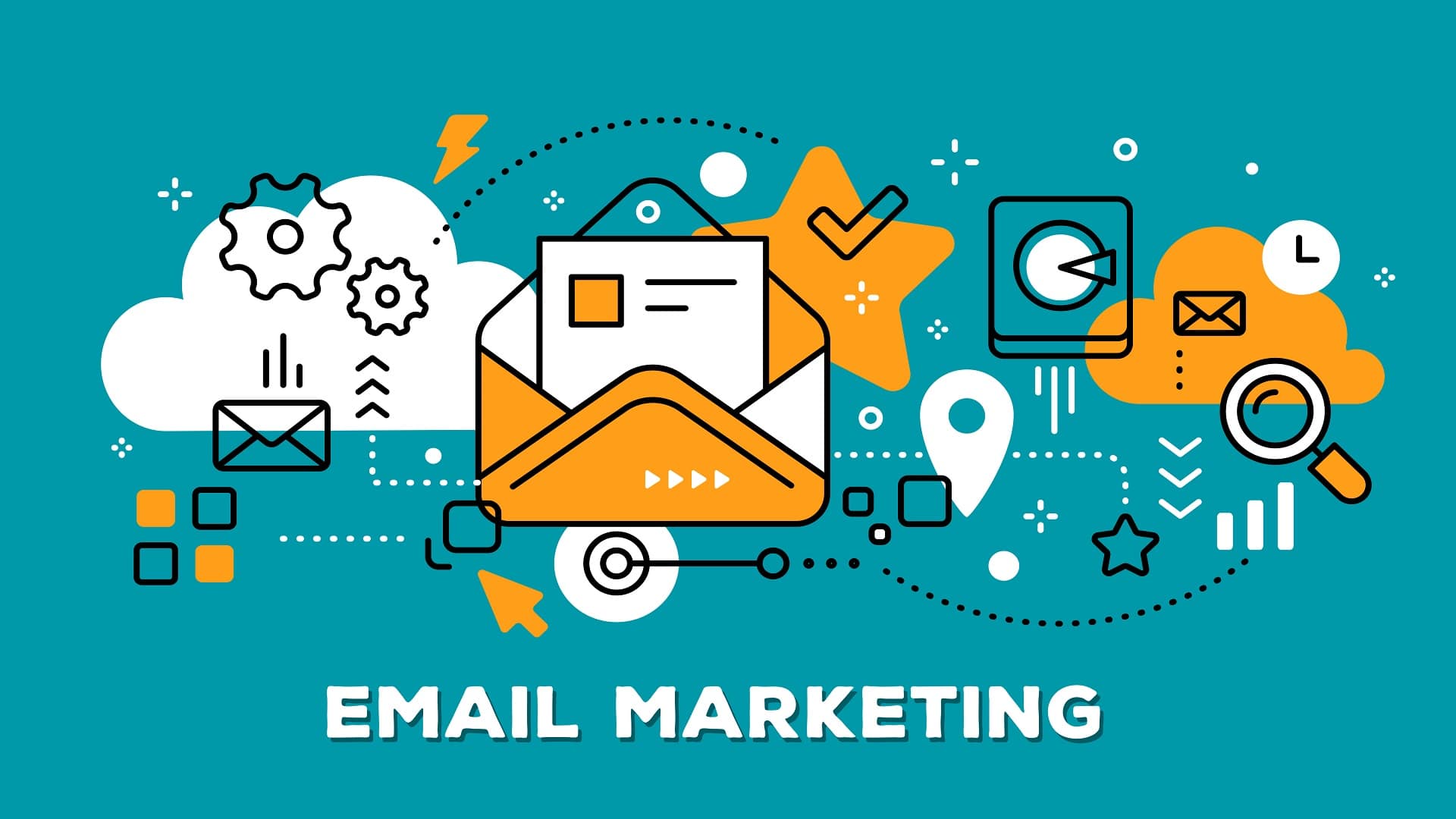In today’s competitive digital landscape, marketing analytics has become an essential tool for businesses looking to optimize their strategies, increase their ROI, and improve customer engagement. The ability to gather, interpret, and act upon data is no longer a luxury—it’s a necessity. Marketing analytics empowers businesses to make data-driven decisions, identify trends, and craft personalized experiences for their audience. But the question is: Are you using marketing analytics to its full potential?
Many businesses collect a wealth of data, but fail to use it effectively. In this article, we’ll explore how to harness the full power of marketing analytics, the benefits it offers, and how it can transform your marketing efforts.
Key Takeaways:
- Data-Driven Decisions: Marketing analytics allows you to make informed decisions based on real data rather than guesswork.
- Real-Time Optimization: With marketing analytics, you can monitor campaigns in real time and adjust strategies on the fly.
- Customer Insights: Marketing analytics helps you better understand your audience and tailor campaigns to their needs.
- Maximize ROI: By identifying which campaigns and channels perform best, you can allocate resources more effectively.
- Track and Improve Performance: Continuously track key metrics to evaluate the success of your marketing efforts and improve over time.
1. What is Marketing Analytics?
Marketing analytics refers to the tools, techniques, and strategies used to collect and analyze data related to marketing campaigns. This data includes everything from website traffic, customer behavior, sales conversions, and social media engagement to email marketing performance and beyond. The insights gained from marketing analytics help businesses understand what’s working, what’s not, and where improvements can be made.
The key components of marketing analytics include:
- Customer Data: Information about your target audience such as demographics, behavior, and preferences.
- Campaign Data: Insights about how marketing campaigns are performing across different channels, including advertising, social media, email, and more.
- Conversion Metrics: Data that tracks how well your marketing efforts are converting leads into customers (e.g., click-through rates, form submissions, sales).
- ROI Metrics: The return on investment for each marketing initiative, helping you determine the cost-effectiveness of your campaigns.
2. Why Is Marketing Analytics Important?
Marketing analytics offers significant advantages to businesses in the digital age. Here’s why you should leverage its full potential:
a. Data-Driven Decision Making
Marketing analytics enables businesses to make informed decisions rather than relying on guesswork or assumptions. By analyzing data, you gain insights into your audience’s preferences, behaviors, and needs. This allows you to fine-tune your marketing strategies and invest resources where they will have the most impact.
b. Improved ROI
By analyzing marketing data, you can identify which channels, campaigns, and strategies generate the most significant returns. Optimizing your marketing budget based on this data ensures that your efforts are more cost-effective, leading to improved ROI.
c. Better Customer Insights
Marketing analytics helps businesses understand their customers on a deeper level. From tracking purchase behavior to understanding which types of content they engage with, these insights allow you to create more targeted and personalized marketing campaigns.
d. Real-Time Performance Monitoring
With marketing analytics tools, you can track the performance of your campaigns in real-time. This allows you to quickly adjust strategies, optimize campaigns, and react to changing market conditions or customer behavior.
e. Competitor Analysis
Marketing analytics not only helps you track your own performance but also enables you to analyze your competitors. By understanding your competitors’ strengths and weaknesses, you can position your brand more effectively and gain a competitive edge.
3. Key Metrics to Track for Optimal Marketing Analytics
To fully leverage marketing analytics, you need to track the right metrics. The following key metrics will help you evaluate the effectiveness of your marketing campaigns and improve decision-making:
a. Website Traffic
Tracking website traffic is fundamental for understanding how visitors are engaging with your content. Key data points to consider include:
- Organic traffic: Visitors arriving through search engines.
- Referral traffic: Visitors arriving through other websites, social media, or email links.
- Direct traffic: Visitors typing your website URL directly into their browser.
- Bounce rate: The percentage of visitors who leave your site after viewing only one page.
b. Conversion Rate
Conversion rate refers to the percentage of visitors who take a desired action, such as filling out a form, making a purchase, or signing up for a newsletter. This metric is crucial for assessing the effectiveness of your landing pages and calls-to-action (CTAs).
c. Customer Acquisition Cost (CAC)
Customer Acquisition Cost (CAC) is the amount of money you spend to acquire a new customer. This includes marketing expenses like advertising, content creation, and promotion costs. Monitoring CAC helps you determine the profitability of your marketing campaigns and adjust your budget accordingly.
d. Customer Lifetime Value (CLV)
Customer Lifetime Value (CLV) measures the total revenue a business expects from a customer throughout their relationship. CLV helps you understand the long-term value of each customer and is essential for optimizing customer retention strategies.
e. Return on Investment (ROI)
ROI measures the profitability of your marketing efforts by comparing the revenue generated to the costs incurred. A positive ROI means that your campaigns are delivering more value than you’re investing, while a negative ROI indicates the need for adjustments.
f. Engagement Metrics
Social media and email engagement metrics can provide insight into how your audience is interacting with your content. Key engagement metrics include:
- Likes, shares, and comments on social media.
- Open rates and click-through rates for email marketing campaigns.
4. Tools and Technologies for Marketing Analytics

To unlock the full potential of marketing analytics, businesses need the right tools and technologies. Some of the top marketing analytics tools include:
a. Google Analytics
Google Analytics is one of the most widely used analytics platforms, offering detailed insights into website traffic, user behavior, conversion rates, and more. It’s a powerful tool for tracking digital marketing campaigns and understanding how visitors interact with your website.
b. HubSpot
HubSpot is a comprehensive inbound marketing platform that includes robust analytics and reporting features. It allows you to track lead generation, website interactions, and customer journeys across multiple channels.
c. Facebook Insights
For businesses that heavily invest in social media marketing, Facebook Insights provides valuable data on the performance of your Facebook pages and ads. You can track engagement, reach, clicks, and more.
d. Mailchimp
Mailchimp is a popular email marketing platform that provides analytics on open rates, click-through rates, and other key metrics. It also offers A/B testing features to help optimize your email campaigns.
e. Kissmetrics
Kissmetrics provides in-depth customer analytics, allowing you to track individual user behavior and understand how customers interact with your website or app. This tool is ideal for businesses that want to track their customer journey in detail.
f. Tableau
Tableau is a powerful data visualization tool that helps businesses analyze large volumes of data and create interactive dashboards. It’s ideal for businesses that want to make data-driven decisions based on visual insights.
5. How to Use Marketing Analytics to Drive Better Results

To truly maximize the potential of marketing analytics, here’s how you can use the insights you gain:
a. A/B Testing
Use A/B testing to compare different versions of your marketing assets—whether it’s an email subject line, website landing page, or ad copy. Marketing analytics can help you identify which variations are more effective in achieving your goals.
b. Personalization
Personalize your marketing campaigns based on customer data. Use analytics to segment your audience and deliver tailored content, offers, and experiences that resonate with specific customer groups.
c. Optimize Campaign Performance
Marketing analytics allows you to monitor campaigns in real time and make adjustments to optimize performance. Whether it’s tweaking ad copy or adjusting targeting parameters, data helps you make informed decisions.
d. Predict Trends
Advanced analytics tools use machine learning algorithms to predict trends and behaviors based on historical data. By identifying patterns, you can make proactive decisions and stay ahead of your competitors.
6. Common Pitfalls in Marketing Analytics and How to Avoid Them
While marketing analytics can be incredibly powerful, it’s easy to fall into certain traps. Here are some common mistakes to avoid:
a. Over-Reliance on Vanity Metrics
Vanity metrics (such as likes or page views) can be misleading if you don’t focus on actual conversions or sales. Always prioritize metrics that align with your business goals.
b. Neglecting Data Quality
If your data is inaccurate, the insights you gain will be flawed. Ensure that your data collection processes are set up correctly and your tracking codes are implemented properly.
c. Ignoring Cross-Channel Data
Avoid siloed data analysis by considering your marketing performance across all channels. Cross-channel analytics provides a more comprehensive view of your campaigns and helps you optimize efforts more effectively.
Also Read : Mastering Digital Marketing: Strategies For Success In The Modern Era
7. Conclusion
Marketing analytics has the potential to revolutionize your marketing strategy, allowing you to optimize campaigns, enhance customer experiences, and improve your ROI. By understanding your audience, monitoring key metrics, and leveraging the right tools, you can unlock the full potential of marketing analytics and drive long-term success. Remember, data alone doesn’t guarantee results—it’s how you use that data to make informed decisions that truly makes a difference.
FAQs
- What is marketing analytics?
Marketing analytics involves using data and statistical analysis tools to evaluate and optimize marketing efforts. It helps businesses understand the effectiveness of their campaigns and provides insights into customer behavior, sales trends, and overall marketing performance. - Why is marketing analytics important?
Marketing analytics is crucial because it helps businesses make data-driven decisions, track the success of marketing campaigns, and optimize strategies. It enables companies to improve customer targeting, increase ROI, and create more personalized marketing experiences. - What key metrics should I track in marketing analytics?
Key metrics to track include website traffic, conversion rates, customer acquisition cost (CAC), customer lifetime value (CLV), return on investment (ROI), and engagement metrics like social media interactions and email open rates. - What tools can I use for marketing analytics?
Popular tools include Google Analytics, HubSpot, Facebook Insights, Kissmetrics, Tableau, and Mailchimp. These tools help businesses monitor and analyze data across various digital marketing channels. - How do I use marketing analytics to improve my campaigns?
Use marketing analytics to identify high-performing channels and strategies, optimize content and ad targeting, conduct A/B testing, and adjust campaigns based on real-time data to increase conversions and ROI. - How can marketing analytics help with customer segmentation?
Marketing analytics helps segment your audience based on behavior, demographics, and purchase history. This allows you to create targeted campaigns that resonate with specific groups, improving engagement and conversion rates. - Can marketing analytics predict future trends?
Yes, advanced marketing analytics tools use historical data to identify trends and make predictions about customer behavior, market changes, and campaign performance. Predictive analytics can help businesses plan future marketing strategies more effectively.




